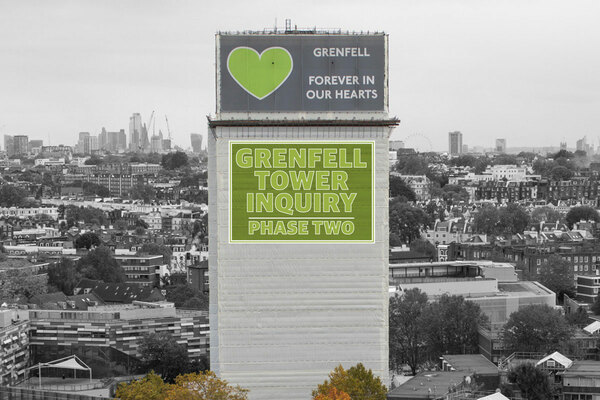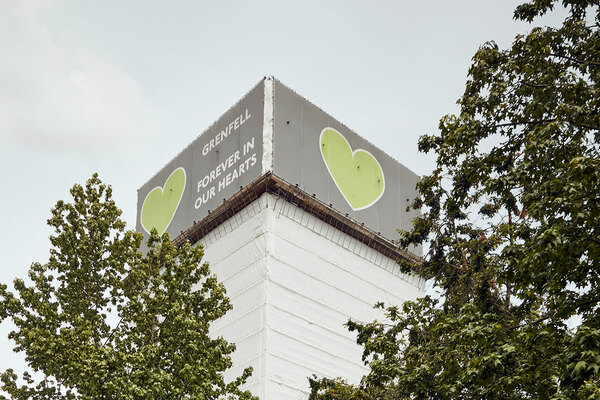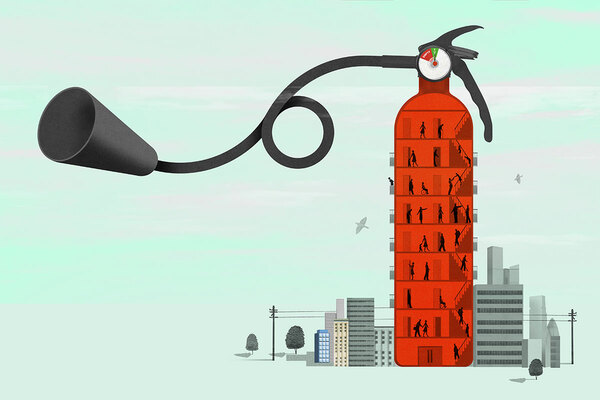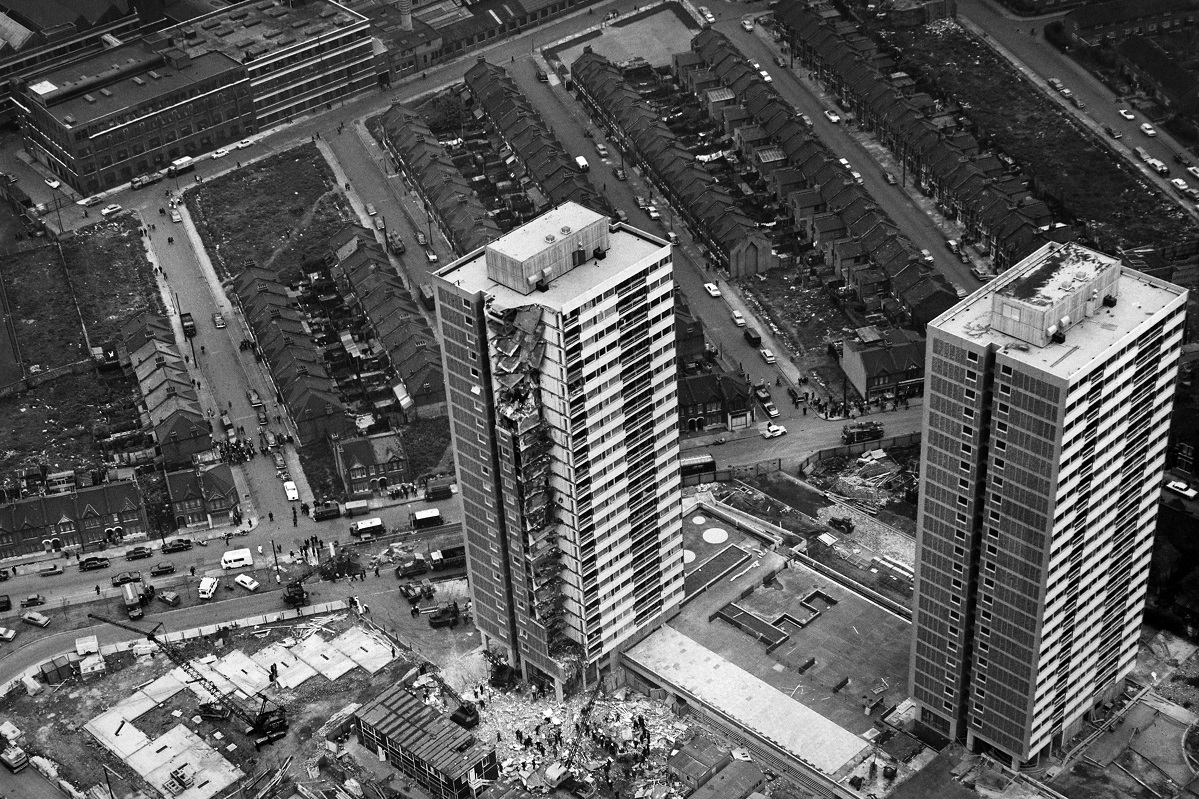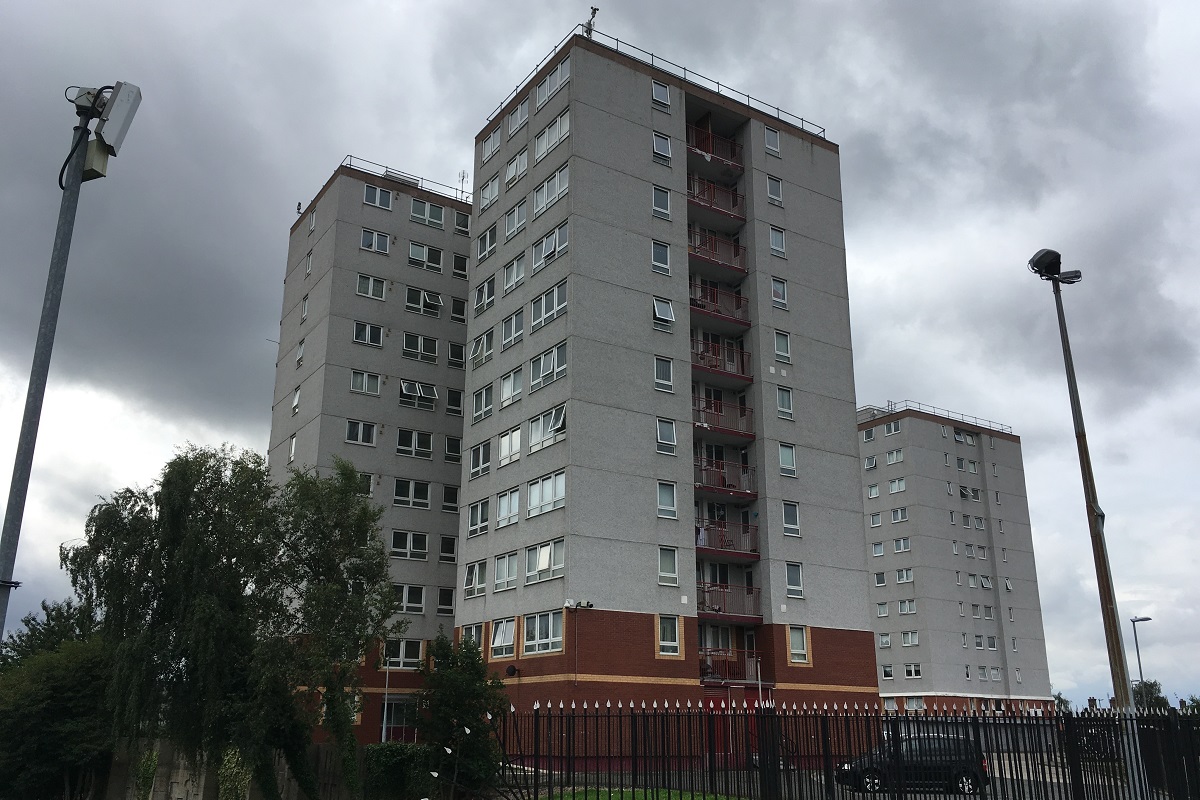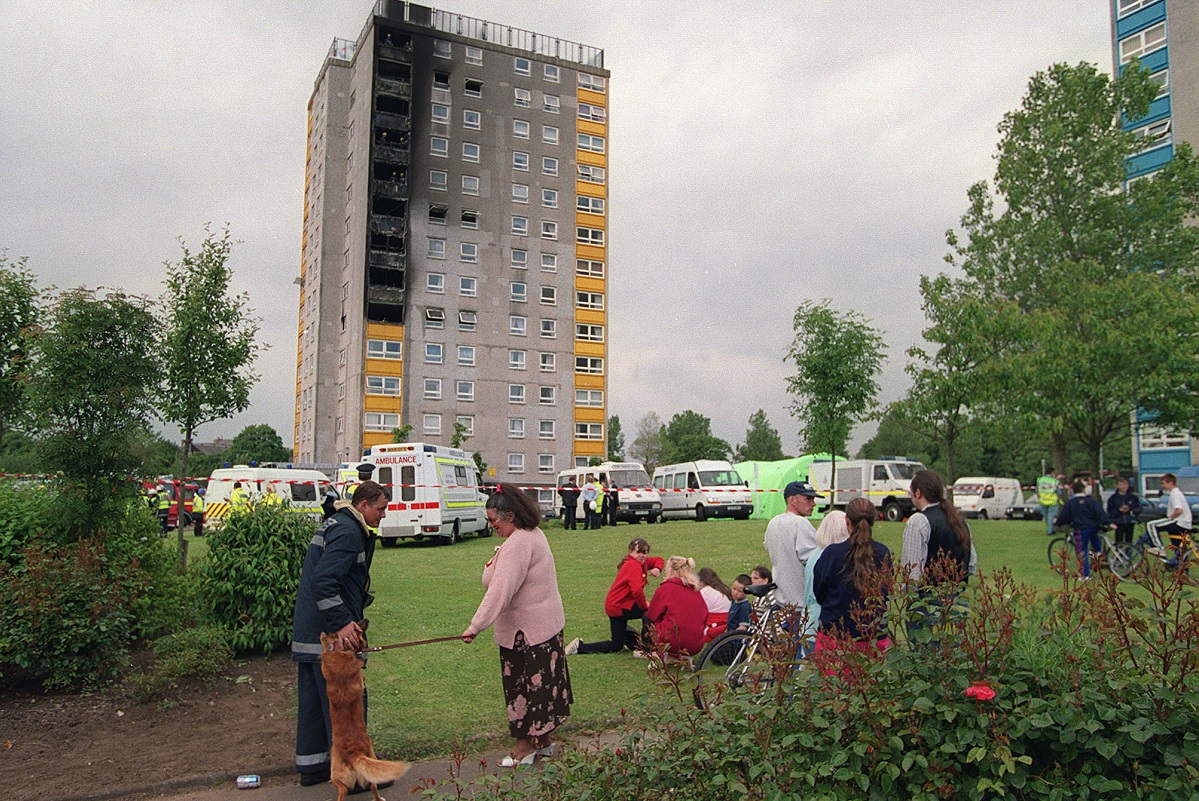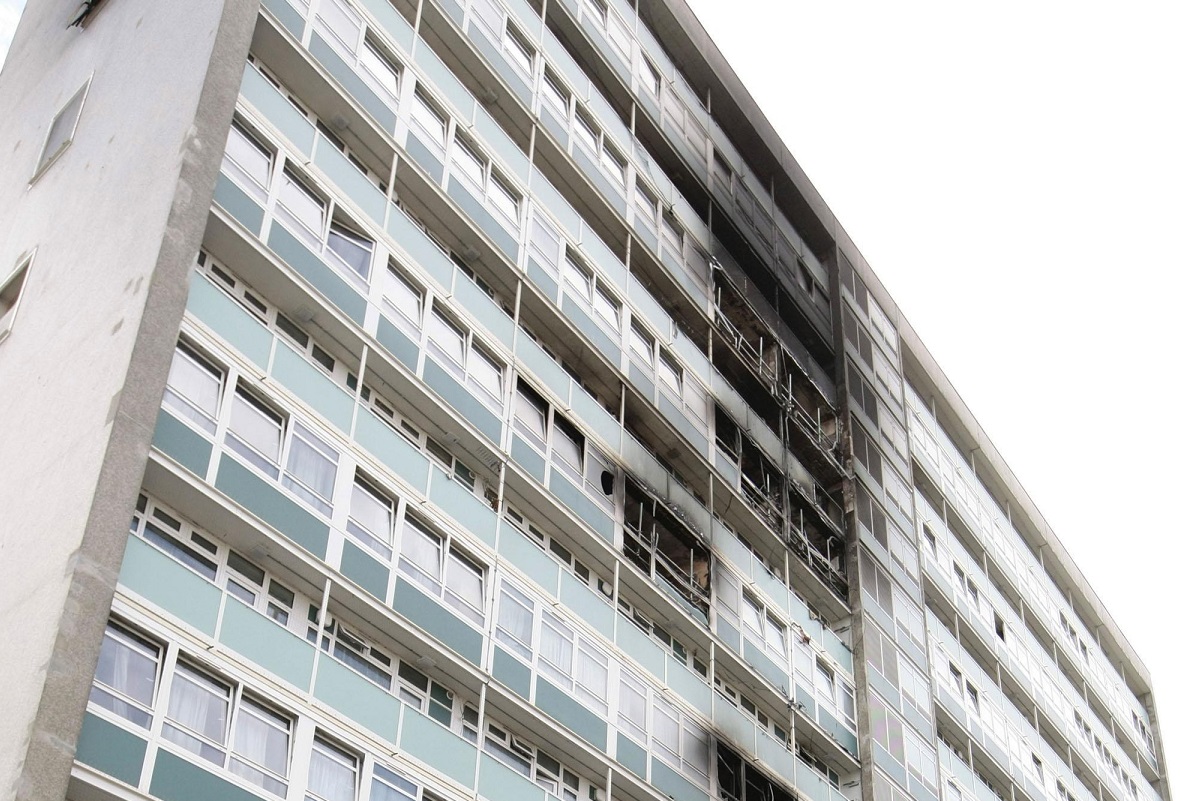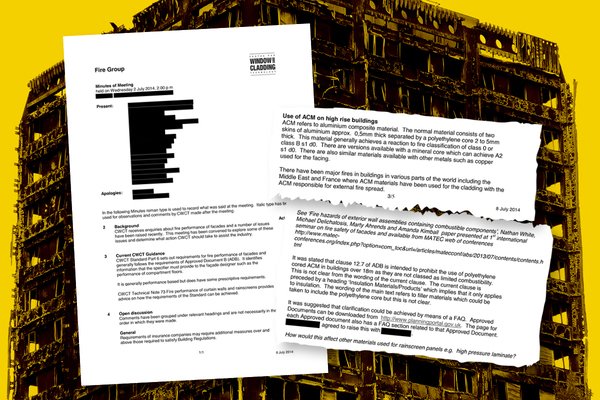Timeline: the road to Grenfell
As the housing world digests the Grenfell Tower Inquiry’s phase one report, Peter Apps presents a timeline of some of the key events and missed warnings that ultimately led to the fire
1960s – Aluminium composite material (ACM) is first developed for use in Germany. Originally used as a base for bed mattresses, it quickly develops into a popular building product. Alucobond holds the first patent for its use.
1962 – A new British Standard Code of Practice sets the first standards for high-rise residential buildings. It introduces the ‘stay put’ policy, based on the principle that buildings will provide one hour’s fire protection.
1968 – A gas explosion at newly built Ronan Point, east London, causes a partial collapse of the building which kills four residents. In the years that follow, concerns about the construction method and the type of materials used are downplayed.
1973 – A fire tears through the combustible materials in the walls and roof of the Summerland entertainment complex in the Isle of Man, killing 50 people. Recommendations in the aftermath, including that a named person take responsibility for fire safety in design, are not taken up.
1974 - The new Lancaster West estate is completed in west London, with Grenfell Tower at its centre.
Margaret Thatcher deregulated the building sector in 1985 (picture: Shutterstock)
1985 – Margaret Thatcher’s Building Act 1984 comes into force. This introduces a massive deregulation of the industry and a system of ‘performance-based’ regulation, sweeping away 300 pages of previously existing codes dating back centuries. Guidance on how to comply with the regulations will now be contained in ‘Approved Documents’ that will be published by ministers. The act also part-privatises building control, allowing private consultants to compete with local authorities to sign off schemes as compliant with regulations.
1986 – The Department of the Environment issues an early warning on the use of combustible cladding systems, saying: “Laboratory tests have shown that a fire within the cavity can melt the aluminium and burn through to the surface several storeys above the fire. These emergent flames could re-enter the block via windows.” Regulations are not toughened to mitigate for this risk.
1990s – Alucobond’s patent expires and several other companies start producing ACM products. Its price drops as a result and use becomes more widespread.
Knowsley Heights in Merseyside (picture: Nathaniel Barker)
1991 – Fire rips through a rainscreen cladding system installed on Knowsley Heights, a tower block in Knowsley, Merseyside, after arson. No one is killed.
1995 – As the Conservative government introduces ‘compulsory competitive tendering’ for local authority housing services, the Royal Borough of Kensington and Chelsea (RBKC) creates a borough-wide tenant management organisation, Kensington and Chelsea Tenant Management Organisation (KCTMO), to take control of its 9,000 homes, including Grenfell Tower.
1997 – Government testing laboratory the Building Research Establishment (BRE) is privatised and becomes a not-for-profit trust. The government also widens the scope of work available for sign-off by private building inspectors, resulting in dozens more entering the market.
Garnock Court after the fire (picture: Mirrorpix)
1999 – Fire tears through uPVC window panels at Garnock Court, a tower block in Irvine, Scotland. Pensioner William Linton is killed.
2000 – Following the fires at Garnock Court and Knowsley Heights, a select committee of MPs investigates the dangers of cladding fires. It recommends tougher guidance to ensure that cladding products are ‘entirely non-combustible’ rather than the existing standard of ‘Class 0’. This recommendation is ignored by ministers in favour of the introduction of ‘large-scale testing’ as a route to compliance for cladding systems. Many of these tests will be carried out by the BRE.
2003 – In an overhaul of the fire service, the government scraps the Central Fire Brigades Advisory Council, which had set national standards for fire authorities. The service is fragmented into local forces, each responsible for setting its own policies.
The Regulatory Reform (Fire Safety) Order 2005 (picture: London Fire Brigade)
2005 – The Regulatory Reform (Fire Safety) Order 2005 sees responsibility for fire risk assessing buildings shift from the fire service to building owners, who are expected to engage private consultants or carry out their own assessments. In the years that follow, inspectors employed by the fire service are drastically cut back.
2005 – An update to Approved Document B relaxes a restriction on the use of combustible insulation on tall buildings, permitting the products for the first time if they are part of a system that passes a large-scale test. This change is supported by the plastic insulation industry. At the same time, new environmental standards come in, requiring much higher levels of insulation on new homes.
2006/07 – A refurbishment is carried out on Lakanal House in south London. Among other changes, combustible high-pressure laminate panels are added beneath the windows.
2008 – Independent auditor Maria Memoli is appointed to assess KCTMO’s repairs performance after concerns are raised by residents. She produces a damning report, accusing the organisation of having “an unhappy culture that needs to change for the better”.
2008 – Multinational aluminium company Arconic obtains a certificate from the British Board of Agrément certifying its ‘Reynobond PE’ ACM cladding panels as ‘Class 0’ rated. This certificate is later described by an expert to the inquiry as “factually inaccurate” and based on “out-of-date” reports.
Lakanal House after the fire (picture: Press Association)
July 2009 – A fire at Lakanal House spreads via its window panels and through the inside of the building because of flawed compartmentation. Six residents die, including three children, after they were advised to ‘stay put’ by the emergency services.
July 2009 – RBKC commissions the Notting Barns South draft masterplan, setting out plans for the refurbishment of the area around Grenfell, including the demolition of the tower. It says the appearance of the tower “blights” the surrounding area.
April 2010 – The Shirley Towers fire in Southampton kills two firefighters after flames spread from the ninth floor.
May 2010 – David Cameron forms a coalition with the Liberal Democrats, ending 13 years of Labour-led governments.
Housing minister Grant Shapps scrapped the Tenant Services Authority in 2010 (picture: Chris McAndrew)
June 2010 – Grant Shapps, the new housing minister, announces the axeing of the Tenant Services Authority – a regulator that was established in 2008 with a mandate to police services to tenants in the social housing sector. Its replacement, the Homes and Communities Agency, is ordered to focus on governance and financial viability with a much limited remit for investigating services to tenants.
December 2010 – Industry and fire sector bodies issue warnings about fire safety during a public consultation on Approved Document B – including making calls for sprinklers in high-rise buildings. These are ignored, with the minister responsible later saying there was “a lot of pressure to reduce regulations”.
April 2011 – The government announces a ‘red tape challenge’, tasking all government departments with overseeing a reduction in regulations.
July 2011 – A new guide for fire safety in blocks of flats is published by the Local Government Association, with support from government. It firmly supports the ‘stay put’ policy, saying a more cautious approach would be “unduly pessimistic”.
David Cameron set out plans to “kill health and safety culture” in 2012 (picture: Getty)
January 2012 – David Cameron announces plans to “kill health and safety culture” and introduces a ‘one in, two out’ rule for new regulations, where double the financial burden has to be removed by cutting regulations before any new regulation is introduced.
February 2012 – Residents of Grenfell Tower are consulted on plans for a refurbishment after the demolition plans are dropped. Answering questions about the type of cladding they would prefer, they select a fire-resistant zinc composite material.
May 2012 – Fire rips up a column of ACM cladding in a high-rise building in Roubaix, France. One person is killed.
Boris Johnson oversaw fire service cuts as London mayor (picture: Getty)
January 2013 – London mayor Boris Johnson implements the 'Fifth London Safety Plan', despite its rejection by the London Assembly. The plan implements £29.5m of cuts including the closure of 10 fire stations. Two of them, Westminister and Knightsbridge, are in close proximity to Grenfell Tower. In addition, the number of fire engines is cut by 27 and 552 posts are removed. In total, during Mr Johnson's time as mayor 324 support staff roles are removed leaving London with a much smaller ratio of support staff and senior officers to the frontline compared to the national average.
March 2013 – After a 50-day inquest, the coroner investigating the deaths at Lakanal House writes to the government with her recommendations to prevent a future disaster. These include a review of Approved Document B “with particular regard to external fire spread”, encouragement of the retrofitting of sprinklers in social housing tower blocks and clarification of ‘stay put’ advice.
May 2013 – Communities secretary Eric Pickles (above) responds to the Lakanal House fire coroner, promising little major action. He says Approved Document B will be reviewed by 2016/17. Leaked meeting notes from KCTMO later reveal that the coroner’s recommendations were also considered privately by the organisation, but it decided not to act after government officials assured them the recommendations would not become mandatory.
February 2014 – The government publishes ‘Generic Risk Assessment 3.2’, which provides guidance to fire authorities on fighting fires in high rises. It warns that stay put policies “may become untenable due to unexpected fire spread” and that evacuation may be necessary in these instances.
February 2014 – Speaking in a debate on fire safety in the Houses of Parliament, housing minister Brandon Lewis cites the ‘one in, two out’ rule on regulation as a reason the government will not make sprinklers mandatory for tall buildings.
April 2014 – Contractor Rydon is appointed to carry out the refurbishment of Grenfell Tower on a ‘design and build’ basis. The refurbishment will involve the addition of cladding, new windows and a communal heating system. Due in part to a government-imposed borrowing cap, the budget for the refurbishment is limited to £9.7m. Rydon wins the work through an open procurement after two previous contractors, Bouygues and Leadbitter, turn it down. Rydon is said to have submitted the most “economically advantageous tender”. A planning application says the proposals will “improve [the tower’s] appearance especially when viewed from the surrounding area”.
Celotex RS5000 was installed on Grenfell Tower after passing a test in 2014
May 2014 – Celotex RS5000, an insulation product made from polyisocyanurate, passes a ‘large-scale test’ at the BRE in a system with cement fibre cladding. It is then advertised by Celotex as “acceptable for use on buildings above 18m in height”. After Grenfell, this test will be revoked when issues including the undeclared presence of fire-resisting magnesium oxide boards come to light.
June 2014 – Emails between KCTMO and Artelia UK, the project consultant for the refurbishment, discuss using cheaper ACM cladding rather than the zinc material selected by residents. The emails, later obtained by The Sunday Times, say this option could save £293,638 from the refurbishment budget.
June 2014 – The Building Control Alliance publishes new industry guidance saying that cladding systems containing combustible materials can be considered compliant with building regulations even if they have not passed a large-scale test, so long as a ‘desktop study’ has been carried out to assert that they would have passed if they were tested.
The minutes of the CWCT meeting
July 2014 – A group of experts, the Centre for Window and Cladding Technology, warns government officials that dangerous ACM cladding is being installed on high rises because of the ‘Class 0’ requirement in Approved Document B. The officials insist this should not be happening, as the introduction of the word ‘filler’ into the guidance means ACM cladding is now required to meet the higher standard of ‘limited combustibility’. The experts say this is not clear and call for a ‘frequently asked question’ to be published clarifying the position. This is never done.
November 2014 – A fire rips through ACM cladding on the Lacrosse Tower in Melbourne, Australia. Sprinklers and an evacuation of the building prevent any deaths.
The fire at the Marina Torch building (picture: Getty)
February 2015 – A huge fire rips through the ACM cladding on the Marina Torch tower in Dubai, spreading over 30 storeys.
July 2015 – Flames tear through a timber-framed block of flats in Canterbury, Kent, destroying 14 flats. Local MP Julian Brazier writes to government calling for consideration of sprinklers and warns: “If it had occurred at night, local firefighters believe they would have been pulling bodies out of the rubble”. The government responds saying the issue of sprinklers has “already been considered”.
July 2015 – An Inside Housing investigation reveals that just 18 of 2,925 social housing tower blocks have sprinklers installed inside flats.
September 2015 – In response to a letter from cross-party MPs calling for updates to Approved Document B to toughen the ‘Class 0’ requirement and reconsider the case for mandatory sprinklers, minister Stephen Williams says that he has “neither seen nor heard anything that would suggest consideration of these specific potential changes is urgent”, adding that he is “not willing to disrupt the work of this department by asking that these matters be brought forward”.
December 2015 – After major concerns from residents about the refurbishment of Grenfell Tower, a local councillor presents a petition to an RBKC council meeting calling for an investigation into the work. This is later presented to the Housing and Property Scrutiny Committee, which is addressed by resident Eddie Daffarn about the alleged issues. An investigation into the refurbishment is ultimately carried out by KCTMO itself, which commends both KCTMO and Rydon for “high quality management” of the project and dismisses residents’ concerns.
December 2015 – Flames rip through the ACM cladding on the giant Address Downtown Hotel in Dubai. At one stage, images show 40 storeys burning simultaneously.
March 2016 – Government steps up its deregulation drive with a ‘one in, three out’ rule and plans to cut “a further £10bn of red tape”. It later emerges that the leader of the review, Sir Oliver Letwin, floated the idea of abolishing building regulations entirely.
The cladding on Grenfell after the refurbishment (picture: Studio E)
May 2016 – The Grenfell Tower refurbishment completes. Arconic’s ACM cladding has been installed on the walls with Celotex RS5000 insulation, a combination that has never passed a large-scale test or been justified through a desktop study. “It is remarkable to see first-hand how the cladding has lifted the external appearance of the tower,” says council leader Nicholas Paget-Brown in the official press release.
July 2016 – The National House Building Council (NHBC), the country’s largest private building inspector, publishes a guide describing Celotex RS5000 as “among the most common wall and facade types encountered on high-rise buildings” and says the NHBC “would no longer require a desktop study to demonstrate compliance” when it is used with some ACM cladding combinations.
Shepherd’s Court on fire (picture: Liam Twomey)
August 2016 – Fire tears through several storeys of the Shepherd’s Court tower in west London. It later emerges that the fire spread via window panels made of stainless steel, timber and polystyrene.
November 2016 – A post is uploaded to the Grenfell Action Group blog, established by residents of the tower, warning that “only an incident that results in serious loss of life of KCTMO residents” will bring the scrutiny of the organisation they believe is necessary.
November 2016 – The London Fire and Emergency Planning Authority writes to KCTMO with a ‘notification of deficiencies’ at Grenfell Tower, demanding a number of actions. Among the issues raised are non-closing fire doors to the staircase and breaches in internal compartmentation.
April 2017 – The London Fire Brigade writes to local authorities advising them to check cladding materials for fire safety in light of the Shepherd’s Court fire.
Gavin Barwell, former housing minister (picture: Simon Brandon)
May 2017 – In response to repeated warnings from MPs about the need to review Approved Document B, Gavin Barwell, then housing minister, writes that “experience of [the stay put] approach to fire safety over many years has showed [sic] this to be an effective strategy”.
14 June 2017 – Fire rips through the cladding installed on Grenfell Tower, killing 72 people.

